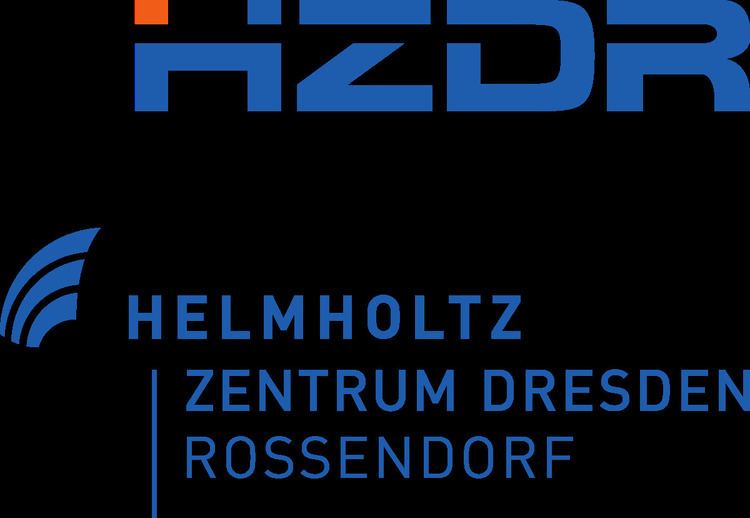Phone +49 351 2600 | Staff 1000 | |
 | ||
Hours Open today · 7AM–5PMThursday7AM–5PMFriday7AM–5PMSaturday9AM–5PMSunday9AM–5PMMonday7AM–5PMTuesday7AM–5PMWednesday7AM–5PM Similar Universit Carl Gustav C, Verein für Kernverfa und Anal, Von Ardenne GmbH, MPI‑CBG, ABX Profiles | ||
Positron emission tomography pet at the helmholtz zentrum dresden rossendorf
The Helmholtz-Zentrum Dresden-Rossendorf (HZDR) is a German research laboratory in Dresden and member of the Helmholtz Association of German Research Centres. Research is conducted in three of the Helmholtz Association's research areas: matter, health, and energy. While the research center was formerly known as Forschungszentrum Dresden-Rossendorf (since 1992), the research site dates back as far as 1956, when the Zentralinstitut für Kernforschung (national institute for nuclear research) in Eastern Germany was founded.
Contents
- Positron emission tomography pet at the helmholtz zentrum dresden rossendorf
- Radiation source elbe at the helmholtz zentrum dresden rossendorf
- Research programs
- Research facilities
- Departments
- Staff and research sites
- Technology transfer
- Students and young scientists
- History
- References
Radiation source elbe at the helmholtz zentrum dresden rossendorf
Research programs
HZDR conducts research in the sectors matter, health, and energy in Dresden and at three other locations in Germany and France. In Grenoble, France, it operates a beamline for materials and radiochemistry research at the European Synchrotron Radiation Facility ESRF. Three of HZDR's five large-scale facilities are also available to international scientists.
Matter HZDR scientists are investigating the structure and function of new materials in order to better understand, optimize, and use them for specific applications. This includes research on novel superconducting and semiconducting materials using extremely high magnetic fields or ion beams. What's more, they are developing detectors applied in medicine and technology, and they are advancing modern technologies for particle acceleration.
Health HZDR aims at making progress in early diagnosis and therapy of cancer, which sees 450.000 incidences in Germany each year. It collaborates closely with partners from university medicine (National Center for Radiation Research in Oncology - OncoRay - in Dresden, Germany). Cancer research at the HZDR focuses on three major fields: new radioactive pharmaceuticals for cancer diagnosis and therapy, innovative medical imaging methods used in oncology as well as particle acceleration using new laser technologies for radiation oncology.
Energy HZDR researchers are looking for economically and ecologically feasible solutions for the energy supply in the future. At the Helmholtz Institute Freiberg for Resource Technology, a joint initiative of HZDR and TU Bergakademie Freiberg, they are targeting at new technologies for the exploration, mining, and use of strategically important metals and minerals, e.g. biotechnological methods for metal recycling. Scientists are also dealing with energy intensive processes in industry, like steel casting or in the chemical industry. They are doing research into nuclear repositories and reactors. And they are contributing to new storage technologies, developing a liquid metal battery.
Research facilities
Departments
Staff and research sites
The HZDR has a staff of about 1.000 persons, working on four different research sites, the headquarters being in Dresden.
Technology transfer
The HZDR Innovation GmbH corporation offers industrial services using HZDR's knowhow and infrastructures in ion implantation. This technology is applied for doping the surfaces of materials with foreign atoms or to produce defects in semiconductors. It is also used to create materials with targeted features like oxidation resistance, which is important for aviation or automotive lightweight construction, or like biocompatibility for medical implants.
Students and young scientists
There are roughly 160 doctoral students. The HZDR has installed several junior research groups to promote excellent young scientists, the topics of which are (last update: 2013): ion beam processed functional materials for spintronics and photovoltaics, computational radiation physics, spinelectronics, reactor physics, magnetization dynamics and magnetostatic, tumor specific PET tracers, in-vivo dosimetry for new types of radiation (together with the Dresden-based National Center for Radiation Research in Oncology - OncoRay). What is more, the HZDR operates an International Helmholtz Research School for Nanoelectronic Networks (NANONET) as well as a Summer Student Program.
History
Founded in 1956, the former research center in Rossendorf was part of the German Academy of Sciences. The German-born British physicist Klaus Fuchs, who took part in the Manhattan Project and acted as a spy for the Soviet Union, was deputy director until 1974.
After the German reunification the "Forschungszentrum Rossendorf" (FZR) was founded. In 2006 the name changed to "Forschungszentrum Dresden-Rossendorf", to emphasize the connection to the research infrastructure in the city of Dresden. In 2011 the center became a member of Helmholtz Association of German Research Centres.
